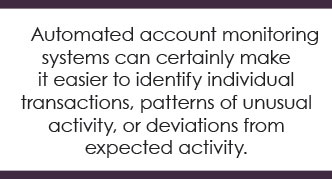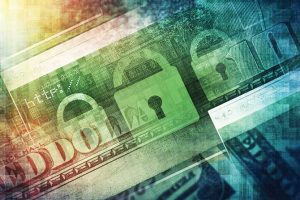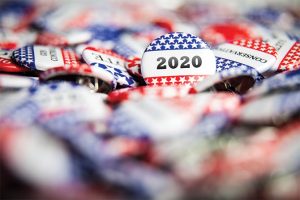By Steve Manderscheid, Compliance Alliance
During normal times, it can be challenging for bankers to get their arms around the regulatory requirements surrounding the Bank Secrecy Act (BSA) and anti-money laundering (AML) regulations. So, when you add a global pandemic, such as COVID-19, things can get a little dicey, especially when navigating competing priorities.
Fortunately for us, the Federal regulators have been proactive in providing the banking industry with up-to-date compliance guidance (although it is important to note the guidance did not extend the BSA regulatory reporting deadlines) relating to the pandemic. Furthermore, the Financial Crimes Enforcement Network (FinCEN) went as far as creating a webpage devoted to coronavirus updates. A brief scan of their webpage includes the following advisories:
- Advisory on Cybercrime and Cyber-Enabled Crime Exploiting the Coronavirus Disease 2019 (COVID-19) Pandemic
- FinCEN Advisory on Imposter Scams and Money Mule Schemes Related to Coronavirus Disease 2019 (COVID-19)
- FinCEN Advisory on Medical Scams Related to COVID-19
- Companion Notice to FinCEN COVID-19 Advisories
- Paycheck Protection Program Frequently Asked Questions
- Updated FinCEN Notice to Financial Institutions Regarding COVID-19
- FinCEN Notice to Financial Institutions Regarding COVID-19
In these statements, FinCEN encourages financial institutions to communicate concerns related to the COVID-19 pandemic and to remain diligent in detecting related suspicious activity. Hopefully, by now, banks have passed the stage where concerns exist over the potential delays in filing required BSA reports – suspicious activity reports (SARs) and currency transaction reports (CTRs) – but know that risk was really for many.
So that brings us to suspicious activity monitoring and reporting, which is a staple of a safe and sound BSA program. By now, suspicious activity, including illicit fraudulent transactions, is not something that is particularly new to us, as we have dealt with many types of fraud – ACH, loan and identity theft fraud – just to name a few. But, since FinCEN has suggested that the banking community “remain alert about malicious or fraudulent transactions similar to those that occur in the wake of natural disasters,” we should take a look at the emerging trends connected to COVID-19:
- Imposter Scams – Bad actors attempt to solicit donations, steal personal information, or distribute malware by impersonating government agencies (e.g., Centers for Disease Control and Prevention), international organizations (e.g., World Health Organization (WHO), or health care organizations.
- Investment Scams – The U.S. Securities and Exchange Commission (SEC) urged investors to be wary of COVID-19-related investment scams, such as promotions that falsely claim that the products or services of publicly traded companies can prevent, detect or cure coronavirus.
- Product Scams – The U.S. Federal Trade Commission (FTC) and U.S. Food and Drug Administration (FDA) have issued public statements and warning letters to companies selling unapproved or misbranded products that make false health claims pertaining to COVID-19. Additionally, FinCEN has received reports regarding fraudulent marketing of COVID-19-related supplies, such as certain facemasks.
- Insider Trading – FinCEN has received reports regarding suspected COVID-19-related insider trading.
When you throw in the reminder regarding the importance of detecting trends related to COVID-19 medical fraud, imposter scams and cyber-enabled crime, the banking industry has the daunting task of being the watchdog for fraudulent transactions.
Where do we start? Begin with the bank’s system for identifying potentially suspicious activity. Most banks have multiple channels that funnel unusual activity to the appropriate party for research and reporting.
First, and likely most important, bank employee detection is key. During the course of day-to-day operations, employees may observe unusual or potentially suspicious transaction activity or requests. During this pandemic, it is important employees are aware of the FinCEN emerging trends so they can be aware of potential red flags that may be uncovered. Further, it would be appropriate to share the bank’s own specific unusual activity trends, if any are identified based on the bank’s customers, products and services, and geographic location.
Second, monitoring systems are designed to detect potential suspicious activity whether manual or automated. For manual monitoring, the goal is usually to identify higher-risk transactions, such as those involving large amounts of cash or those to or from certain geographies, which may need to be tweaked when considering the current FinCEN emerging trends relating to the coronavirus.

Automated account monitoring systems can certainly make it easier to identify individual transactions, patterns of unusual activity, or deviations from expected activity. These systems can capture a wide range of account activity, such as deposits, withdrawals, funds transfers, automated clearing house (ACH) transactions, and automated teller machine (ATM) transactions, directly from the bank’s core data processing system. However, the program parameters and filters should be reasonable and tailored to the activity that the bank is trying to identify or control and may need some fine-tuning based on our current COVID-19 environment.
Remember, the battle against suspicious activity has only begun at the identification stage. Once identified, the bank still has the responsibility to review and research the activity and ultimately come to a final SAR decision. If a decision is made to file a SAR related to the COVID-19 pandemic, it is important to provide information with a high degree of usefulness for government authorities, including law enforcement. FinCEN has requested that appropriate information is included in any report to help identify the fraud, such as:
- If the suspicious activity is related to an ACH payment from a state unemployment insurance program, please clearly mention COVID19 UNEMPLOYMENT INSURANCE FRAUD in field 2 of the SAR (Filing Institution Note to FinCEN) as well as in the narrative. This will make it much easier for your SAR to get to law enforcement teams working with the states on unemployment fraud.
- Or if the activity involves a counterfeit check or ACH payment for the EIDL program, please also clearly mention COVID19 EIDL FUNDS FRAUD in field 2 of the SAR (Filing Institution Note to FinCEN) and state this in the narrative, as there are specific prosecutorial teams working on EIDL fraud.
Remember, financial institutions should provide all pertinent available information in the SAR and narrative. The better the story (i.e., the narrative), the more likely it will assist law enforcement to identify and act against COVID-19-related crimes.
As we continue to do our part to fulfill our BSA regulatory duties, it is important to remember those that may be impacted most – customers and community members. Continue the good fight and remain vigilant during these challenging times and help protect those most susceptible to being taken advantage of from those bad actors.
Steve Manderscheid brings over 25 years of financial industry experience to the Compliance Alliance team. Previously, he focused on all aspects of regulatory compliance risk management while also serving in a Bank Secrecy Act officer capacity. In recent years, he has ventured into leadership roles in enterprise-wide risk management (ERM), complaint management, and vendor and third-party relationships. In his role as Compliance Officer, Steve brings all of his experience to completing reviews, and working on developing tools, training materials, and training events for our members. Recently, he’s started expanding his educational role and has become the main presenter of our popular C/A Minute videos.
This story appears in 2020-2021 Issue 4 of the Nebraska Banker Magazine






